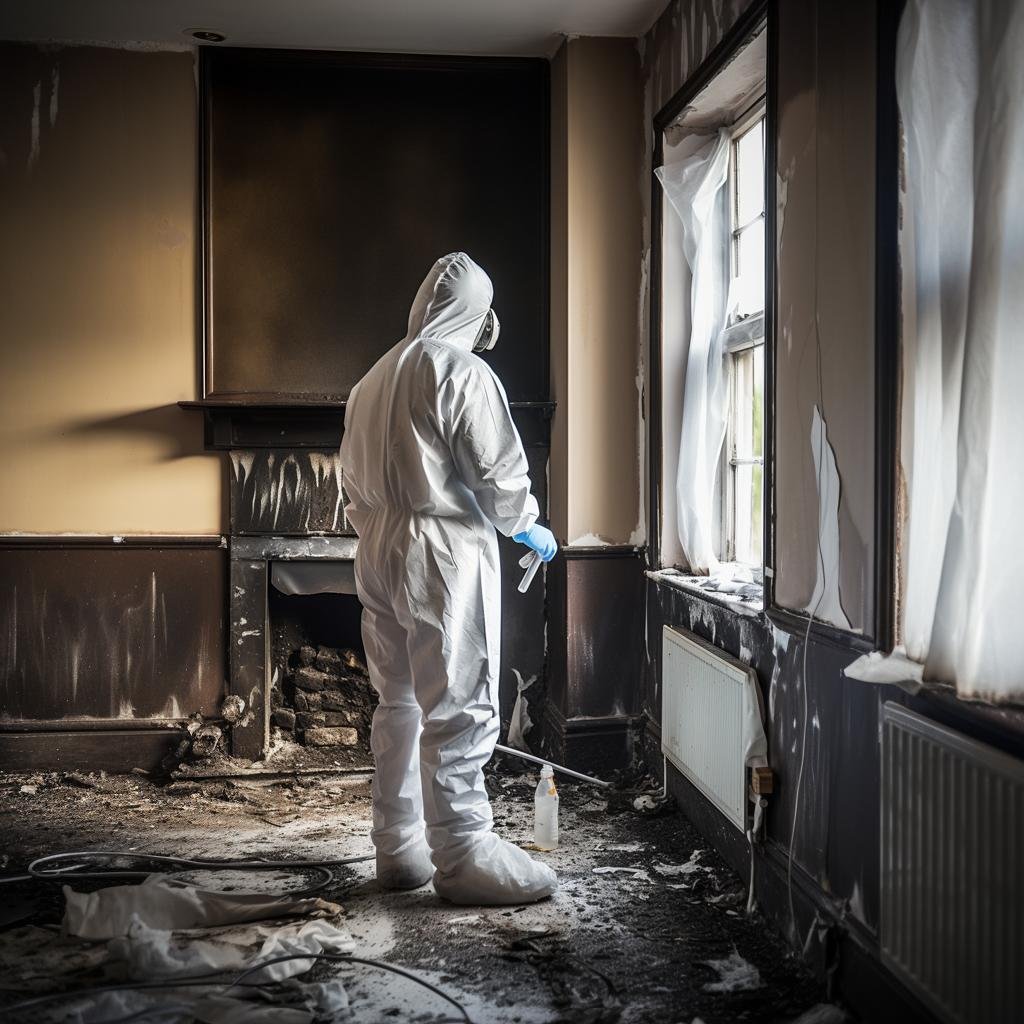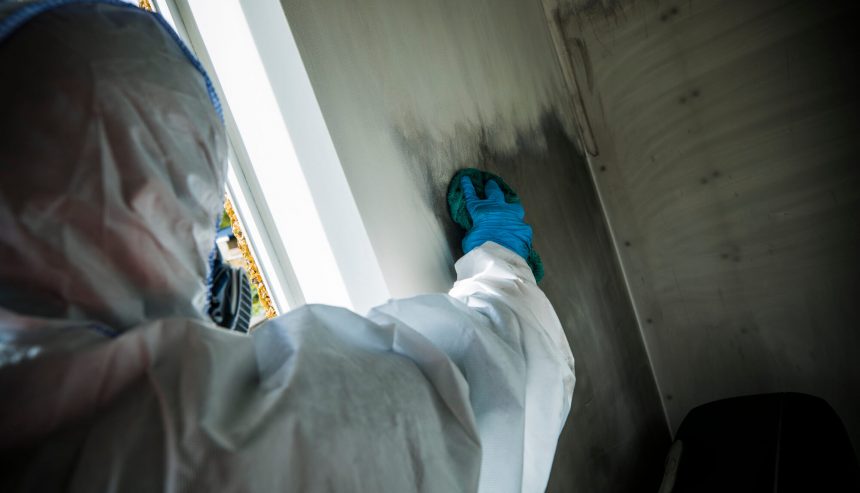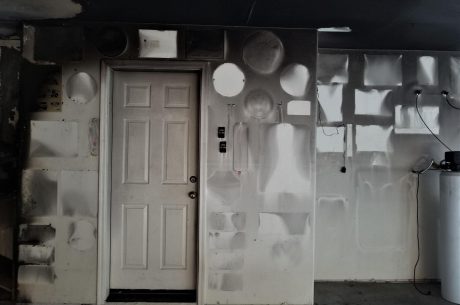If you’ve ever dealt with fire damage, you probably know soot isn’t just some annoying black powder. It’s sneaky, corrosive, and surprisingly harmful — both to your health and your home. One minute it’s floating through the air, the next it’s coating your walls, ceilings, electronics, and furniture. And here’s the thing: the longer you wait to clean it up, the worse it gets.
So, what exactly is soot? And why is it so important to act fast after it shows up?
Let’s break it down.
What is Soot and How Does It Form?
Soot is a black, powdery or flaky substance made up of carbon particles resulting from incomplete combustion of organic materials — like wood, coal, or oil. When things burn and don’t get enough oxygen, soot forms. It’s made up of very tiny particles that can travel far and wide throughout your home.
Why Soot is More Than Just a Surface Issue
Unlike dust, soot doesn’t just sit on surfaces — it bonds with them. And if you ignore it, it can start breaking down materials like paint, wood, plastic, and even metal. That’s why it’s not just ugly… it’s dangerous.
The Science Behind Soot Deposition
How Fire and Smoke Lead to Soot
When a fire burns, it releases smoke — and inside that smoke is soot. As the smoke cools, soot begins to settle on every surface it touches. Think ceilings, vents, cabinets, baseboards, electronics — nothing is safe.
Common Sources of Soot in Properties
You might be surprised, but it’s not just fires. Other sources include:
- Furnace malfunctions (puff backs)
- Candles (especially scented ones)
- Cooking (especially with oil)
- Fireplaces and chimneys
Properties Most at Risk for Soot Accumulation
Older homes with poor ventilation, homes with lots of electronics, or buildings that have experienced even minor fires are most at risk. And in dry, warm places like Scottsdale, AZ, where HVAC systems run constantly, soot can spread faster than you think.
The Damage Caused by Soot
Structural Damage and Staining
Soot seeps into porous materials — drywall, upholstery, wood, even insulation. Once inside, it stains, corrodes, and weakens structures. Black streaks on walls? That’s just the beginning.
Health Risks Associated with Soot Exposure
Soot particles are tiny enough to be inhaled deeply into your lungs. Long-term exposure can lead to:
- Respiratory issues
- Skin irritation
- Eye discomfort
- Even heart conditions
How Soot Impacts HVAC Systems and Electronics
Soot clogs filters, coats fan blades, and settles on internal components. In electronics, it can cause short circuits or overheating. That’s thousands of dollars in potential damage — yikes!

Why Prompt Cleaning is Crucial
The Chemistry of Soot Corrosion
Soot mixes with moisture in the air and forms acids. These acids don’t just sit still — they eat away at everything they touch. Paint starts bubbling. Metal rusts. Plastic warps. Every second counts.
What Happens When You Delay Cleaning
Letting soot sit for more than 48 hours increases the damage exponentially. After a week, stains can become permanent, odors embed into materials, and restoration becomes more expensive.
Case Study: A Tale of Two Recoveries
Imagine two homes. Both suffered minor kitchen fires. One homeowner called for cleanup immediately. The other waited a week. The first got away with deep cleaning. The second needed wall replacements and lost valuable electronics. Moral? Don’t wait.
Effective Techniques for Soot Removal
Dry vs. Wet Cleaning Methods
- Dry Cleaning: Used on delicate surfaces or dry soot; involves chemical sponges.
- Wet Cleaning: Used for heavy soot; uses degreasers and cleaning solutions.
HEPA Filtration and Specialized Vacuums
Regular vacuums push soot back into the air. Professionals use HEPA filters that trap soot particles, ensuring nothing escapes.
Cleaning Porous and Non-Porous Surfaces
Wood, drywall, and fabrics need different methods from tile, glass, and metal. Knowing the right technique is key to full recovery.
DIY vs. Professional Soot Cleaning
Why Professional Help is Often Necessary
You can’t wipe soot with a rag. It’ll smear and embed further. Professionals know the chemistry and have the right tools to remove it safely and completely.
Risks of DIY Methods
Using water or bleach on soot can cause chemical reactions, making stains worse. Not to mention, you risk inhaling dangerous particles.
What to Expect From a Professional Soot Cleaning Service
Expect:
- A full property assessment
- Air quality testing
- Deep cleaning with industry-grade tools
- Odor elimination
- Detailed restoration plan
Long-Term Property Recovery Strategies
Deodorization and Air Purification
Lingering smoke smells? Ozone treatments and air scrubbers remove them completely.
Restoring Walls, Furniture, and Floors
Depending on severity, restoration may include repainting, refinishing, or deep steam cleaning.
Insurance Documentation and Support
Good restoration pros document everything for your insurance claim — before, during, and after.
Spotlight: Puroclean Restoration Specialists in Scottsdale, AZ
How They Handle Soot Damage and Recovery
Puroclean Restoration Specialists offer rapid-response soot and smoke damage services, backed by advanced tools and a skilled team.
Why Property Owners in Scottsdale Trust Puroclean
With local knowledge and top-tier equipment, they’re always ready — especially during Scottsdale’s wildfire season or after HVAC-related incidents.
Fast Response, Advanced Equipment, and Local Expertise
From industrial air scrubbers to thermal foggers and HEPA vacuums, Puroclean leaves no soot behind. Their local presence means faster service and better understanding of your property needs.
Conclusion
Soot might look like dust, but it’s a silent destroyer. Fast action makes all the difference between minor cleanup and full-blown restoration. Whether you’ve had a fire or just suspect soot buildup, don’t wait — get help fast. And if you’re in Scottsdale, Puroclean Restoration Specialists are just a call away.
FAQs
1. What are the signs of soot damage?
Black streaks, foul smoke odors, discolored walls, or sensitive electronics acting up — all signs soot might be lurking.
2. Is soot dangerous to breathe in?
Yes, especially for kids, seniors, or those with respiratory conditions. Even short-term exposure can cause irritation or long-term harm.
3. Can soot damage be reversed?
If caught early, yes. Professionals can clean and restore most materials. Delays, however, may cause permanent staining.
4. How long does it take to clean up soot?
It depends on the severity, but most professional cleanups take 1–3 days for moderate damage. Heavier cases may take longer.
5. Who should I call for soot damage in Scottsdale, AZ?
Call Puroclean Restoration Specialists. They’re trusted, local, and always ready for emergencies.




 PuroClean Restoration Specialists
PuroClean Restoration Specialists